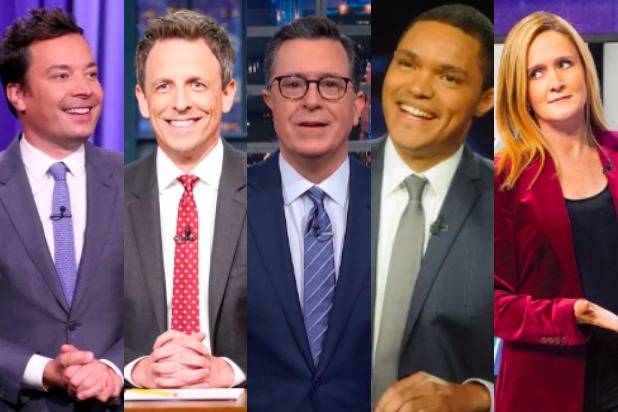Coronavirus has impacted every country in the world. Families are separated, millions are unemployed and there seems to be no clear end date in sight. The pandemic has hit many industries, crippling some and allowing others to prosper. For instance, Netflix reportedly gained 16 million subscribers during quarantine, while smaller and more niche businesses like boutiques struggle to remain open. Within the entertainment industry specifically, late night television has had to adapt quickly in order to maintain its following.
Initially, late night shows were supposed to continue within their studios, just without an audience. As the coronavirus outbreak was taken more seriously and measures were put in place for people to remain six feet away from each other, that idea was quickly scrapped. Over the past few months, shows like Conan on TBS, Late Night with Stephen Colbert, The Tonight Show with Jimmy Fallon and Late Night with Seth Meyers have shifted to an online format. With varying camera and lighting quality, they utilize platforms like Zoom to recreate their talk show allure. Though this is not without its own troubles. Just as the world itself tries to navigate online classes and meetings, these hosts face audio lags, freezing mid sentence and guests with poor connection. For instance, as Conan O’Brien interviewed Jesse Eisenberg, the actor was seated in an RV on his way to Lawrence, Kansas. With the less than stellar quality of his video and audio, the two were still able to make jokes and discuss the current global situation. In another segment relatable to parents having to divide their attention between work and their children, Jimmy Fallon was forced to record his show while his daughter climbed over him. Though it wasn’t what Fallon had intended, it created an adorable moment between the two filled with giggling.
Without elaborate sets, a plethora of actors, or professional equipment, the comedians have to tap into their own pool of resources at home and creativity to replicate their in studio sketches.
In fact, O’ Brien recently crashed a Zoom meeting for TIBCO, a tech company in Palo Alto. Taking on an urgent tone, he passionately gave suggestions, which turned out to be from the company’s own website. The surprised employees enjoyed a break from the constant state of worry and uncertainty. This follows suit with the remotes he is known for, or segments where he goes into the public unscripted and interacts with strangers. Seth Meyers also continued his segment “What Does Millennial Late Night Writer Karen Chee Know,” where he and his 25-year-old writer see what pop culture things they each respectively know. Considering the online format, the sketch was successful and seemed as though it could have truly been filmed in front of a live studio audience. It continued a popular genre seen on other shows like Jimmy Kimmel, in which the youth are pitted against older generations to see who knows more. Hence, it brings a refreshing sense of familiarity in these troubling times that Meyers did not know of Lizzi Mcguire and Hanson was lost on the millennial writer.
Besides late night talk shows, other shows have had to adapt as well. For instance, Saturday Night Live has been greatly impacted. The sketch comedy show, as its name says, is meant to be live on tv, with sets, costumes and an audience. Instead, the cast has created its own sketches from their homes. Cast member Pete Davidson had his mother film a parody of a Drake music video, singing what about what rapper Drake would be thinking in quarantine in a song he calls “Drake Song.” The “Weekend Update” hosts Colin Jost and Michael Che utilized the Zoom background feature to recreate the green screen backgrounds that would normally be found behind them. All these sketches are audience free, making it harder to tell when a joke lands well or fails to be understood. Hence, the actors and writers of the show are left to await feedback in the form of online reviews or likes and dislikes on YouTube. Still as they attempt to provide fresh and humorous content, the gravity of the coronavirus is not lost. In fact, during a “Weekend Update” segment, Michael Che took a moment to say goodbye to his grandmother who passed away due to coronavirus.
The pandemic has sparked the need for people to deliver uplifting and hopeful content. Whether it be Tom Hank’s Saturday Night Live monologue calling for people to have hope or late night shows having a donation feature under their videos, the clear message is to not give in to a demoralized state, but rather focus on staying healthy, try to see some positivity and help others. It is from this message that actor John Krasinski created his YouTube show, “Some Good News”. With the news battered with constant negativity, deaths, sorrow, and political matches, he reminds the world that still there is some good going on. He himself creates news, as he got free AT&T service for healthcare workers as well as free Red Sox tickets for life. Their enthusiasm at throwing the first pitch of the 2020 MLB season radiated through the video and as evident by the comments, reached the viewers as well. Overall, in these trying times, comedians and late night hosts may not have the equipment and resources to put on elaborate shows, but still they continue to provide laughs and hope.
